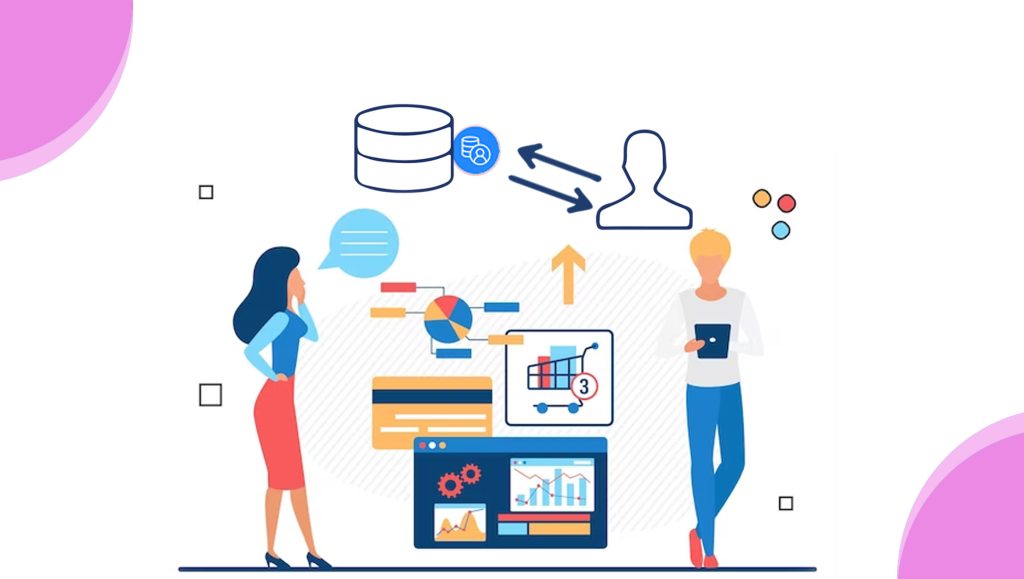Digital marketers are increasingly talking about zero-party data. This is because experts have identified zero-party data as a major aspect with the potential to drive hyper-personalization in marketing.
With the demise of third-party cookies (of which Google has recently started a slow phase out) and the emphasis on first-party and zero-party data, the latter comes to the rescue for marketers. Let us see what zero-party data is and how it should be utilized in your digital marketing and sales efforts.
What is Zero-Party Data?
Zero-party data is a term coined by Forrester Research. It is also known as explicit data. As per the definition, zero-party data is data that a consumer proactively shares with a brand. It includes purchase intentions, personal context, and anything that a consumer wants the brand to know about them.
Zero-party data is considered the gold standard of data. A brand collects such data only from a very loyal customer. It also means that the brand does not have to go over the top to collect the data from the customer. On the other hand, customers are willingly sharing information with their favorite brands about their purchase preferences.
Benefits of Zero-Party Data
There are many benefits to collecting zero-party data. Some of the benefits include:
- The data collected with this method is always accurate and qualitative because it comes directly from the consumer.
- The data is shared by the customer and so, it is relevant.
- Zero-party data collection is quite cost-effective. Most of the time, the data is fed into the brand’s system, there is just the need to harness the information in the right way.
- There is no need to worry about privacy regulations and compliance because the source of collection is always known.
Read More: SalesTechStar Interview with Paul Cowan, Chief Growth Officer at When I Work
How to Collect Zero-Party Data
It is time to fuel your marketing and sales sync and efforts with zero-party data. Here are some of the popular ways to do it:
- Account registration forms: One way to gather zero-party data is to ask users for required information during the registration process. As users register with your website for the first time, it gives you a golden opportunity to get some introductory details, such as their names, phone numbers, and so on.
- Quizzes: The more interactive is your way of gathering information, the better will be the responses from the customers. A faster way to engage your customers is to indulge them into quizzes. During the quiz, you can ask your customers about their preferences, the kind of brands they are interacting with, and questions that will give you a better idea about the style, quality, or features that they would like to get.
- Reviews: One can also gather zero-party data with the help of reviews from your previous customers. One way to do this is by using pop-ups and emails to ask users to review your brand or something specific that they purchased recently. The information received will help you improve your efforts in the future and help you optimize your services.
- On-site surveys: Surveys also help brands collect zero-party data from consumers. By keeping surveys on your websites and social media platforms, you can request users to submit surveys. These surveys will help you understand the user experience and to identify your brand’s rating in the market, and so on.
Best Practices for Leveraging Zero-Party Data
Once you have collected zero-party data, it is important to use it effectively. Some best practices for leveraging your zero-party data processes include:
- Be clear about why you are collecting the data: Customers are more likely to share their data if they understand why you will need it. Do not overburden the user with unnecessary questions and keep them as simple as possible.
- Make it easy for customers to share their data: The process of sharing data should be as simple and straightforward as possible. For instance, you can add more objective type questions that do not require more words to answer them. The easier the method of data collection, the better will be the responses.
- Use the data to create personalized experiences: The data should be used to create experiences that are relevant and engaging to each customer. Show your customers how the data is helping you create good experiences for them.
- Protect the data: The data should be stored securely and only used for the purposes that it was collected for. As customers are increasingly worried about their privacy, ensure them that their data is always safe with you.
Read More: Back Office and Robotic Process Automation: Key Trends to Observe
Conclusion
It is time that you use zero-party data to your advantage with the right strategy. When you take the right approach to collecting zero-party data, you can gradually learn everything that your audiences want.
With zero-party data you will not only win more users but you can also retain them and boost loyalty for your business. If that convinced you, it is time to start harnessing the power of zero-party data now.





















